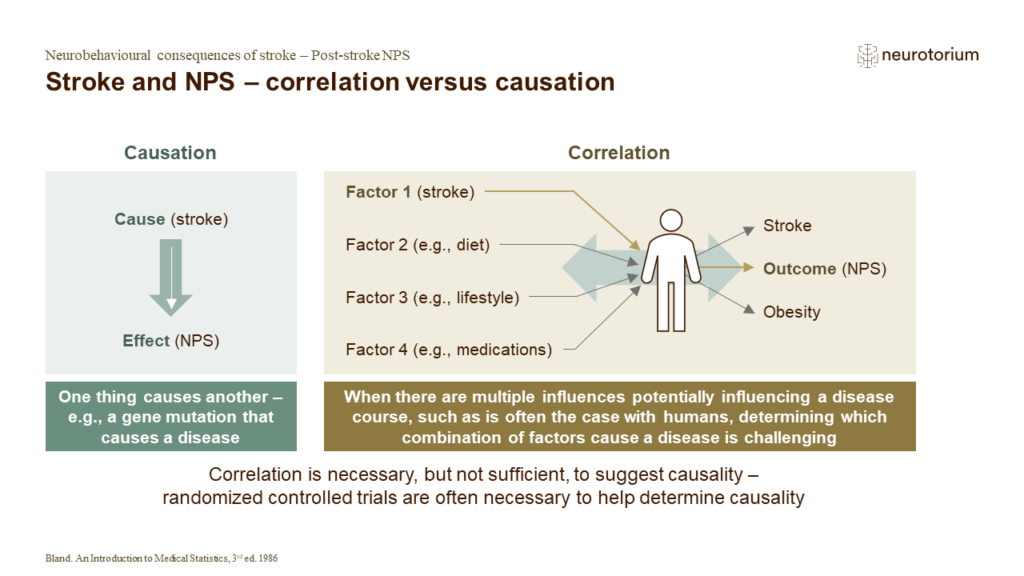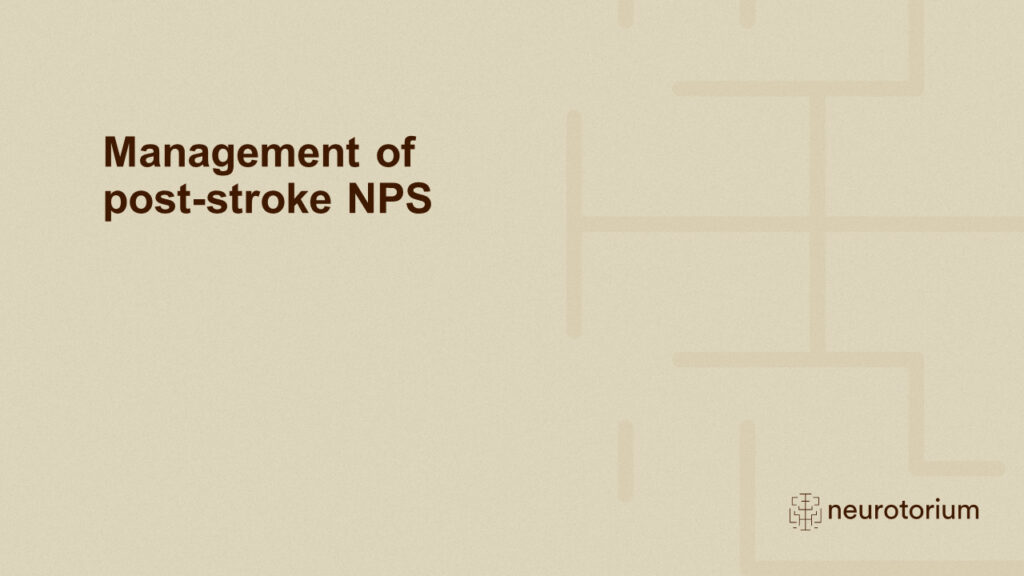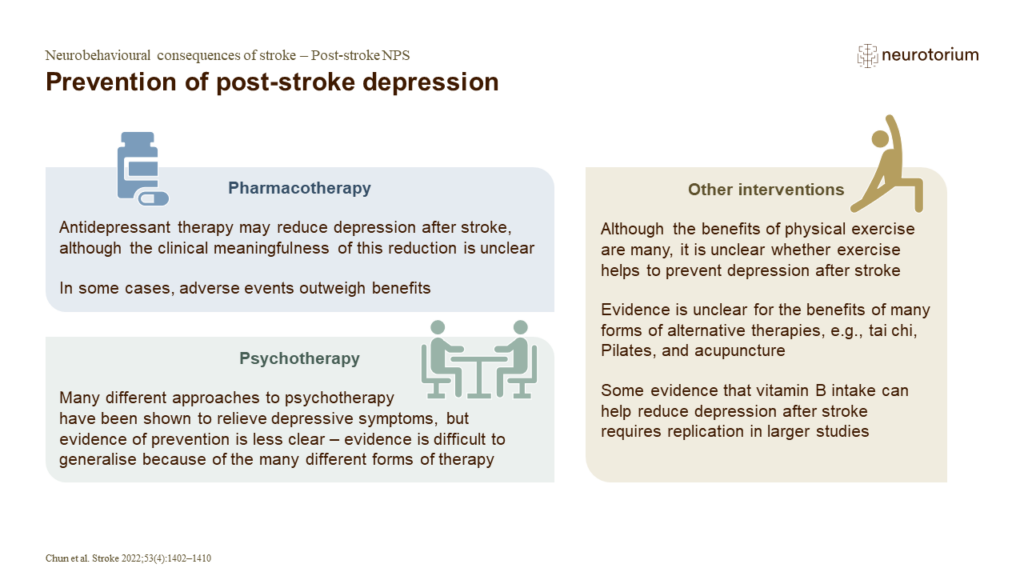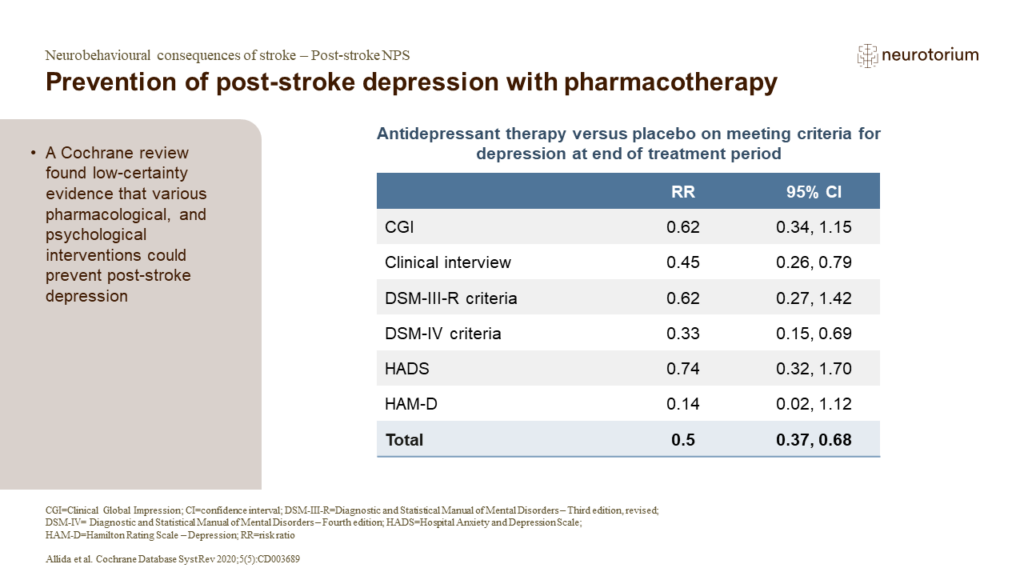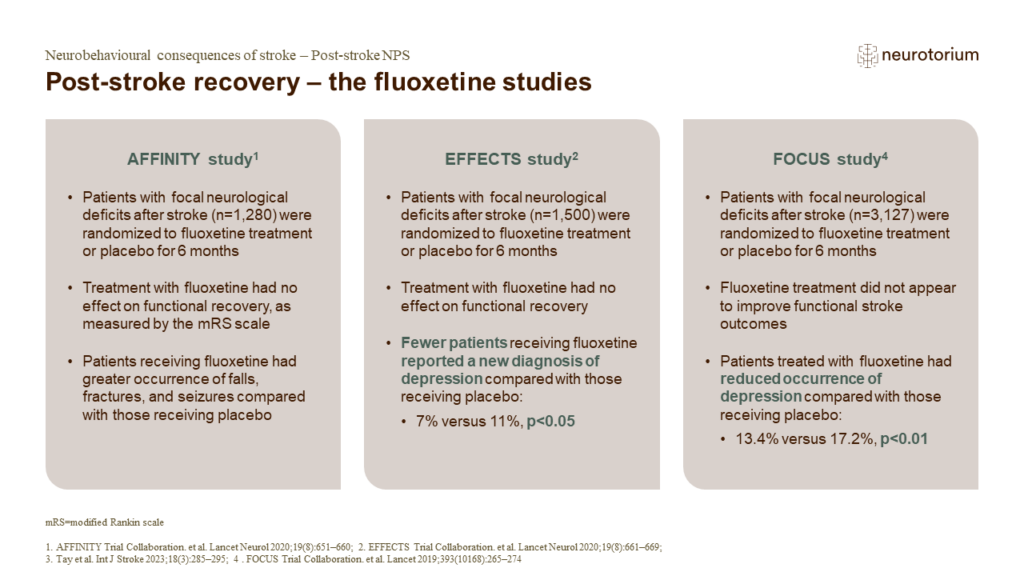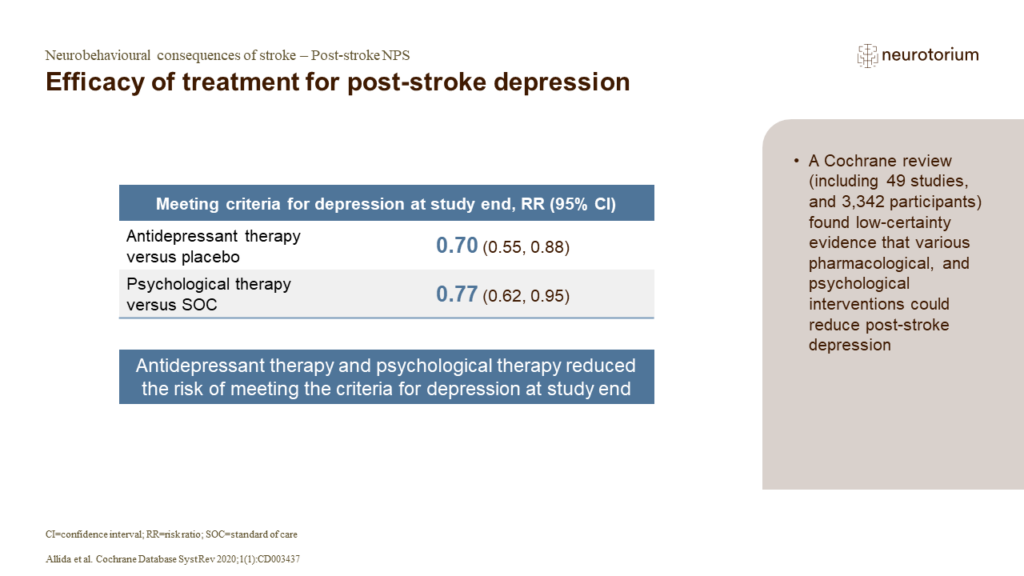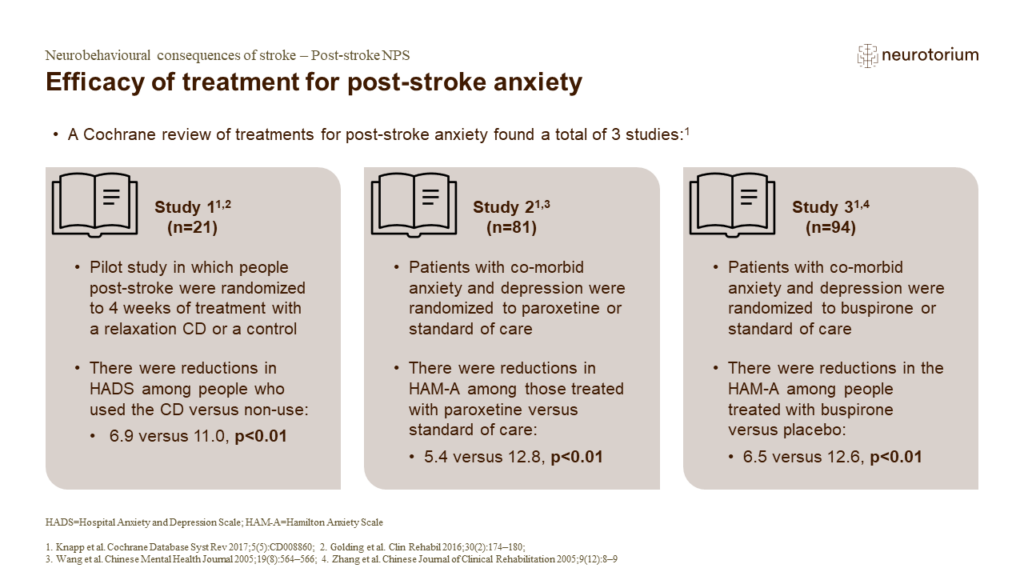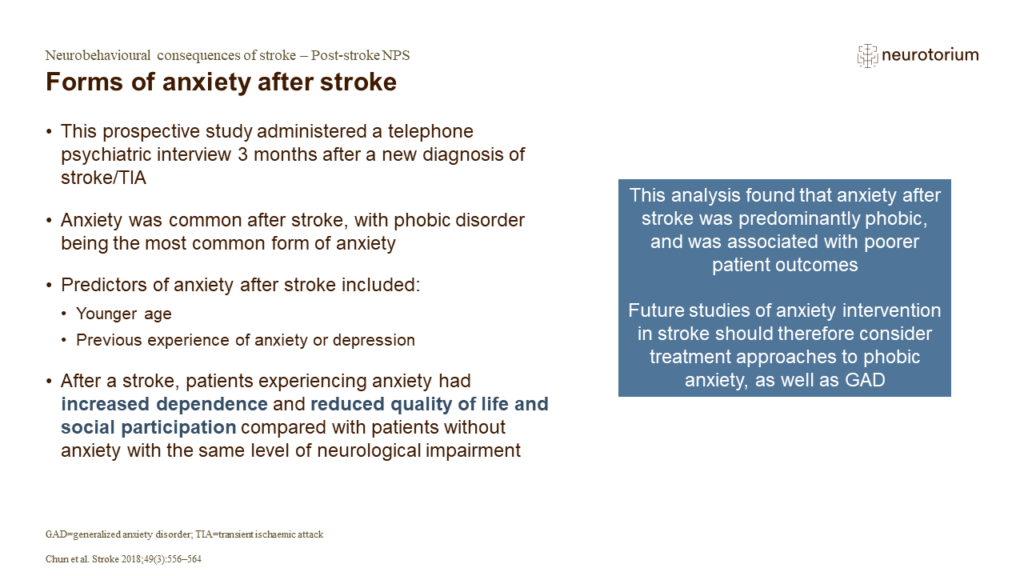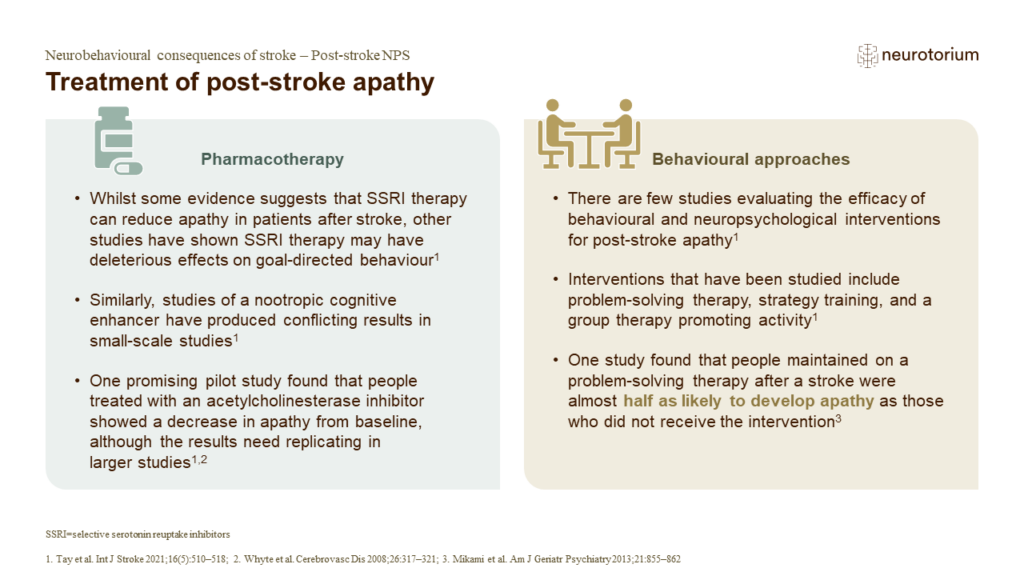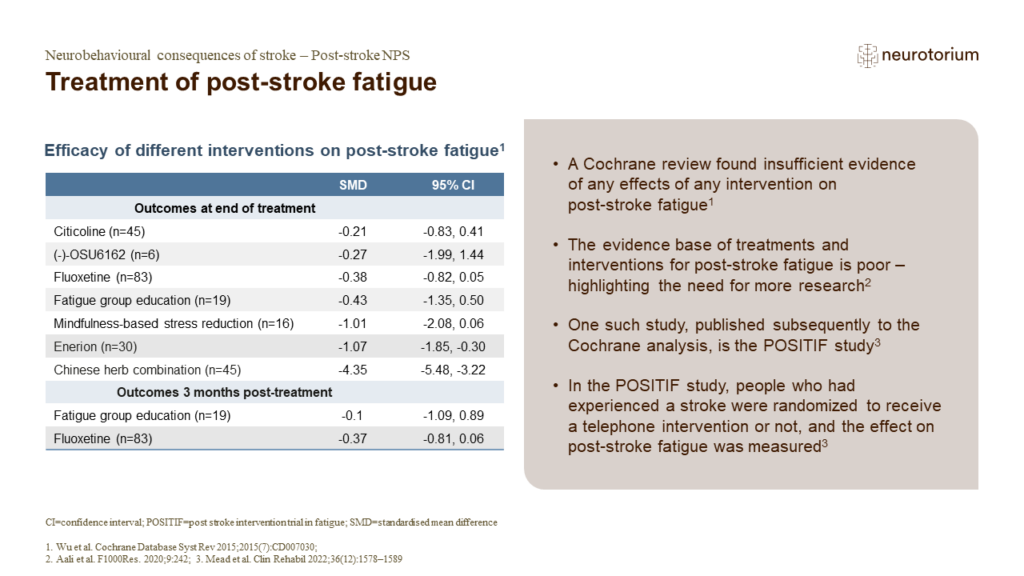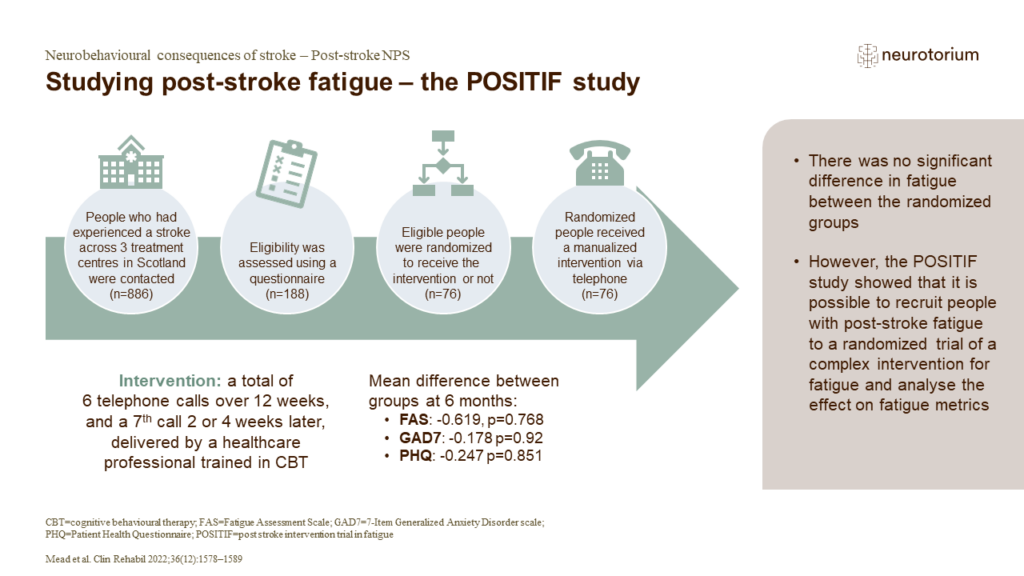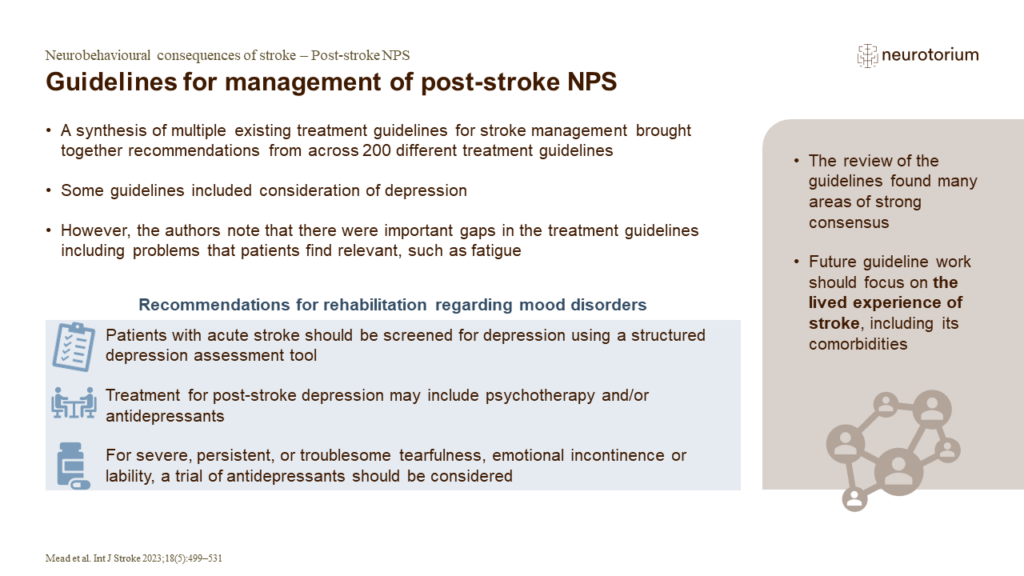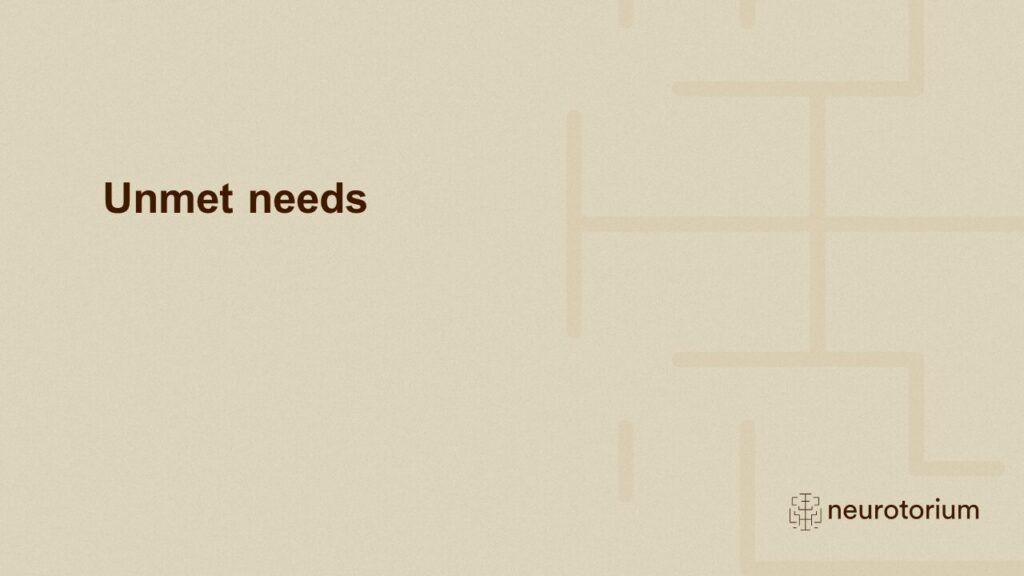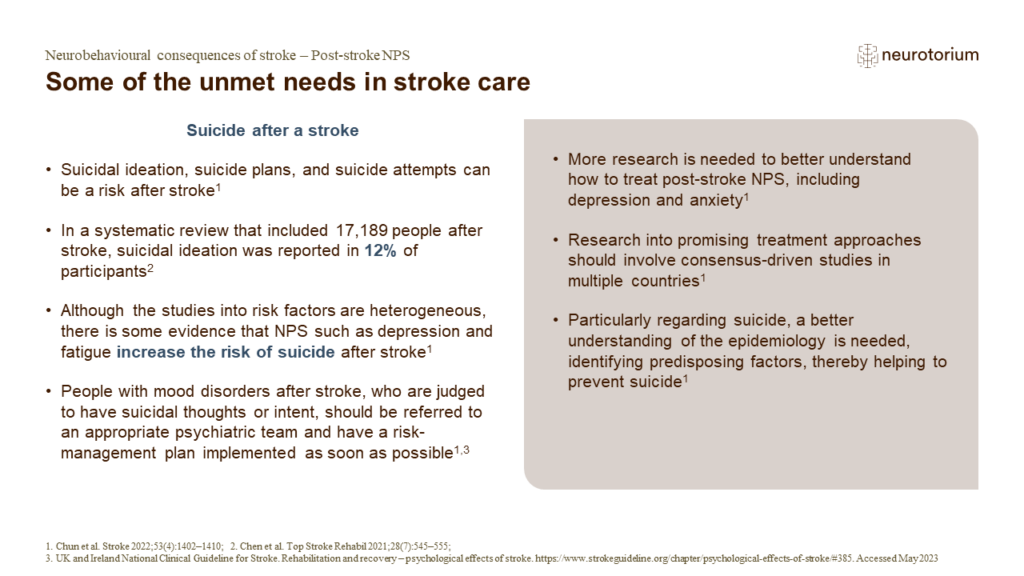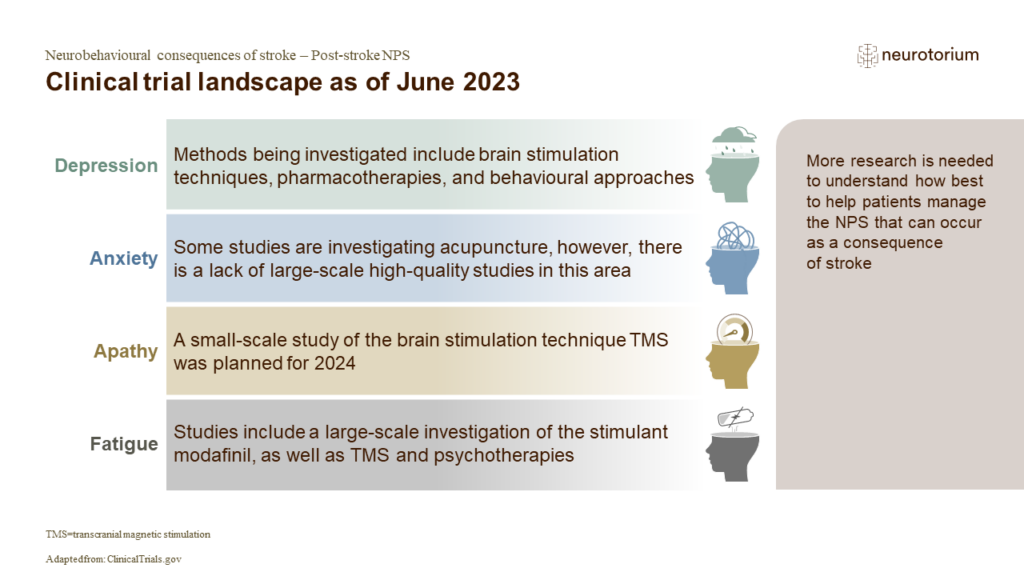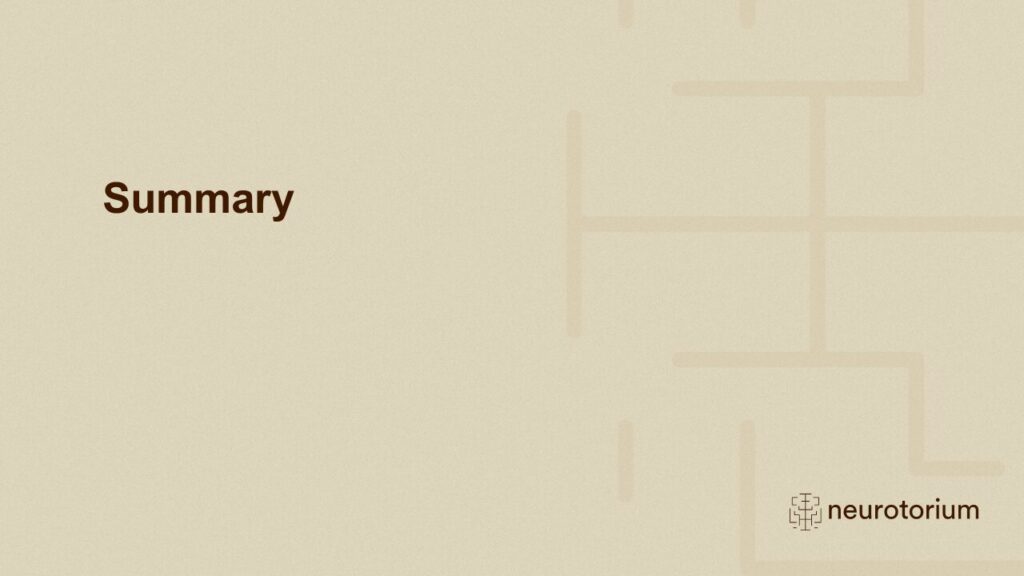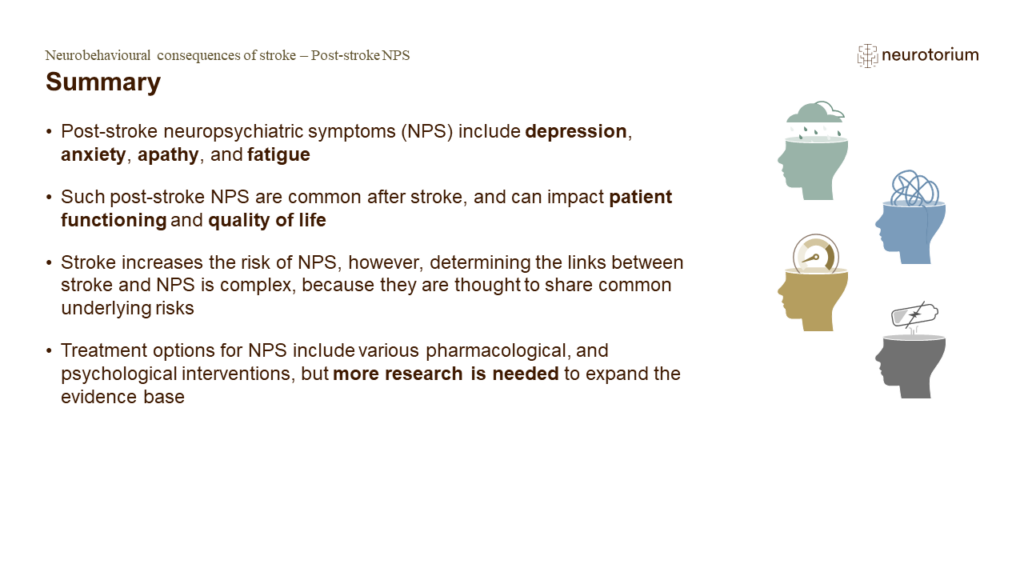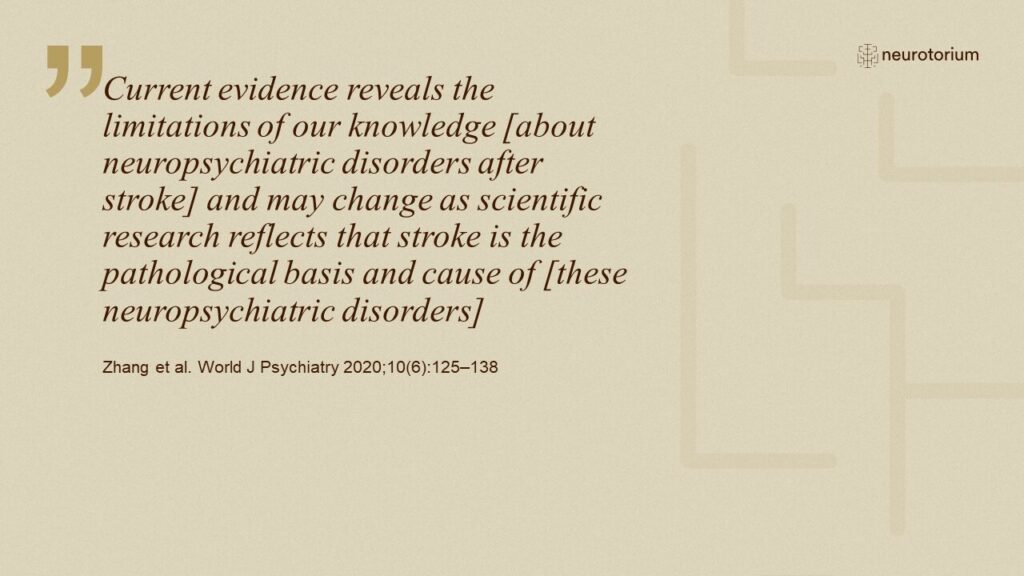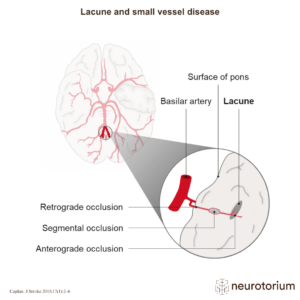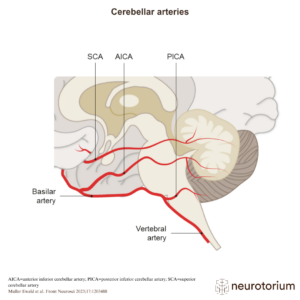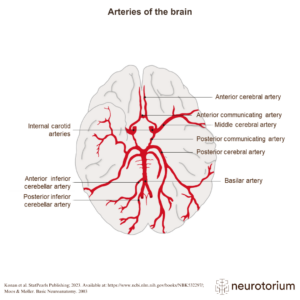Index for
slide deck
Introduction
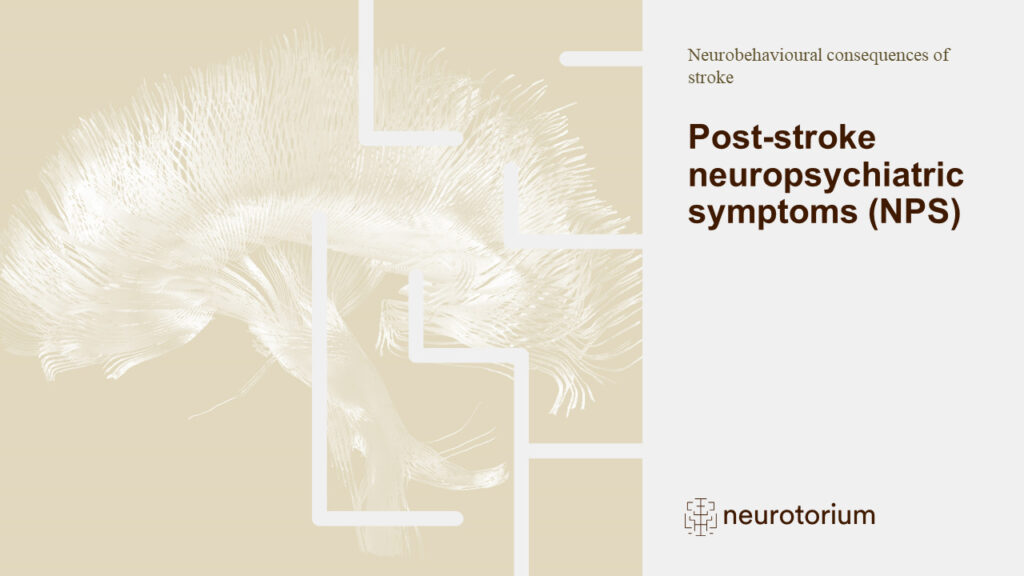
Post-stroke neuropsychiatric symptoms (NPS)
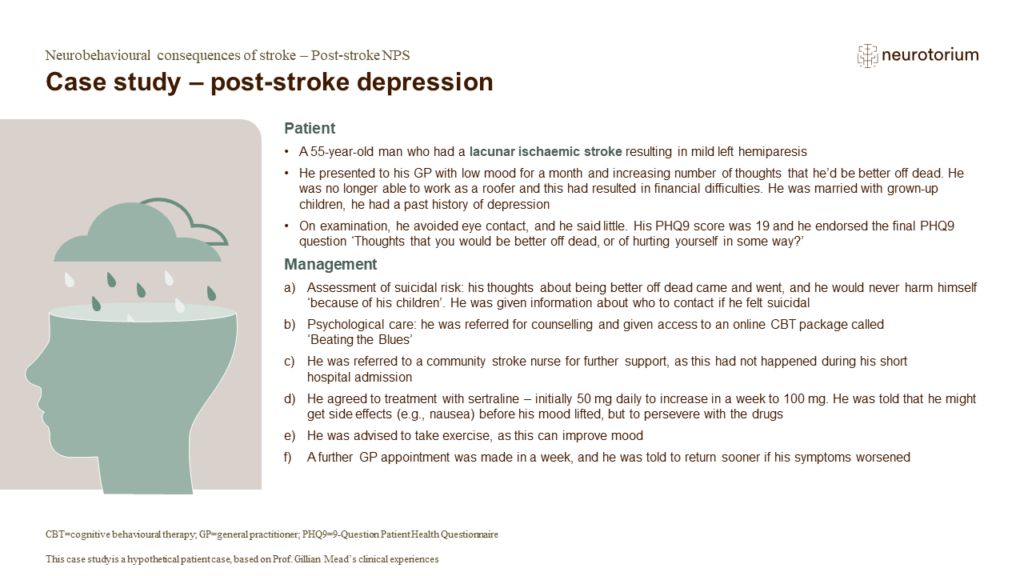
Case study – post-stroke depression
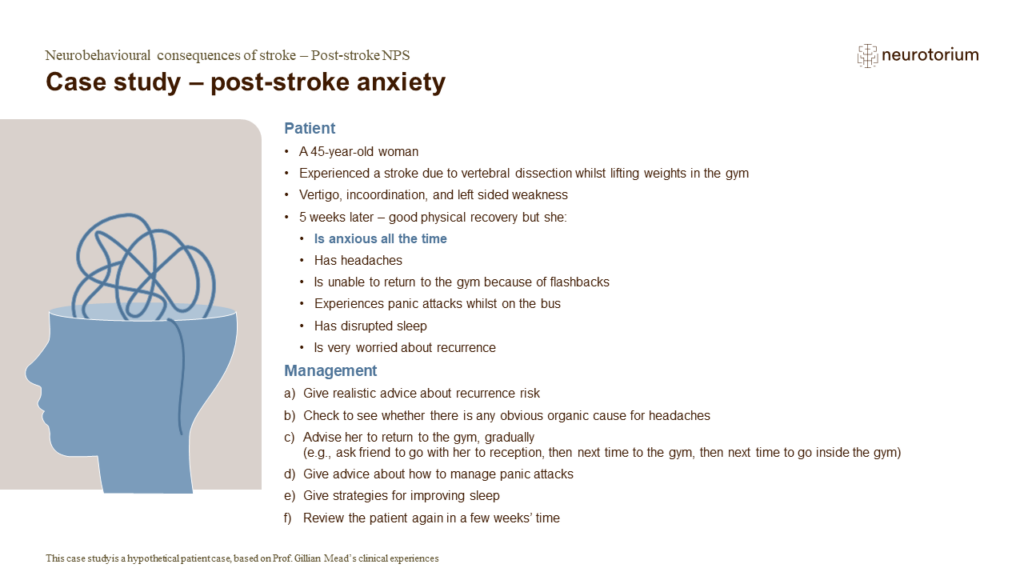
Case study – post-stroke anxiety
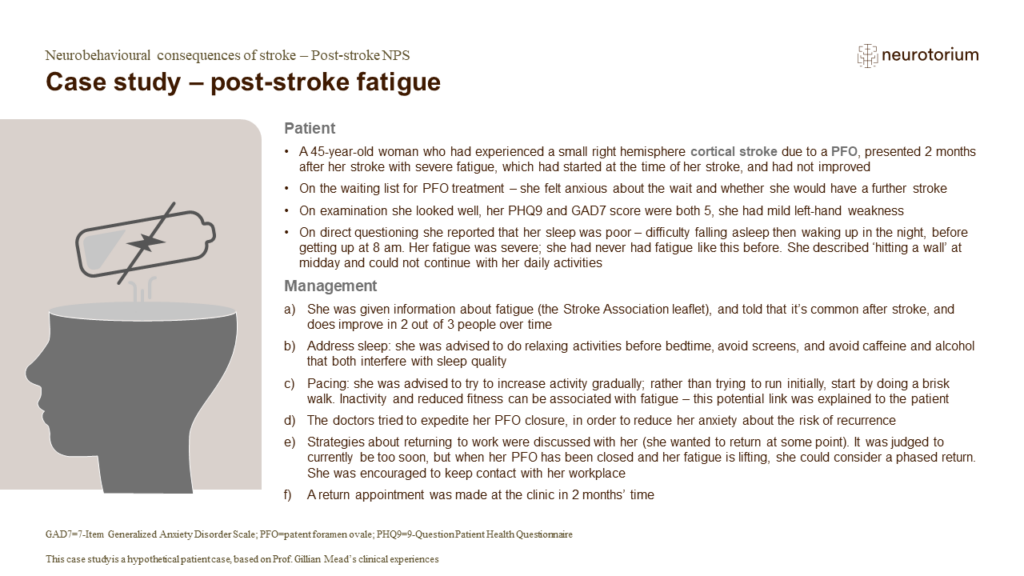
Case study – post-stroke fatigue
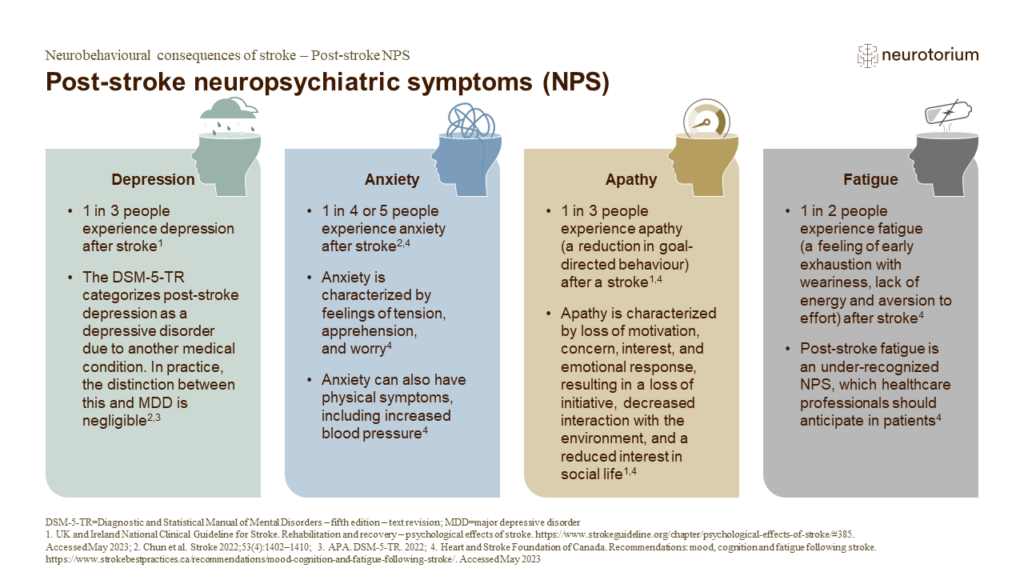
Post-stroke neuropsychiatric symptoms (NPS)
As outlined on the slide, after a stroke many people go on to experience neuropsychiatric symptoms including depression, anxiety, apathy, and fatigue.1 Furthermore, many people who experience a stroke also experience psychological distress below the threshold for a psycho…
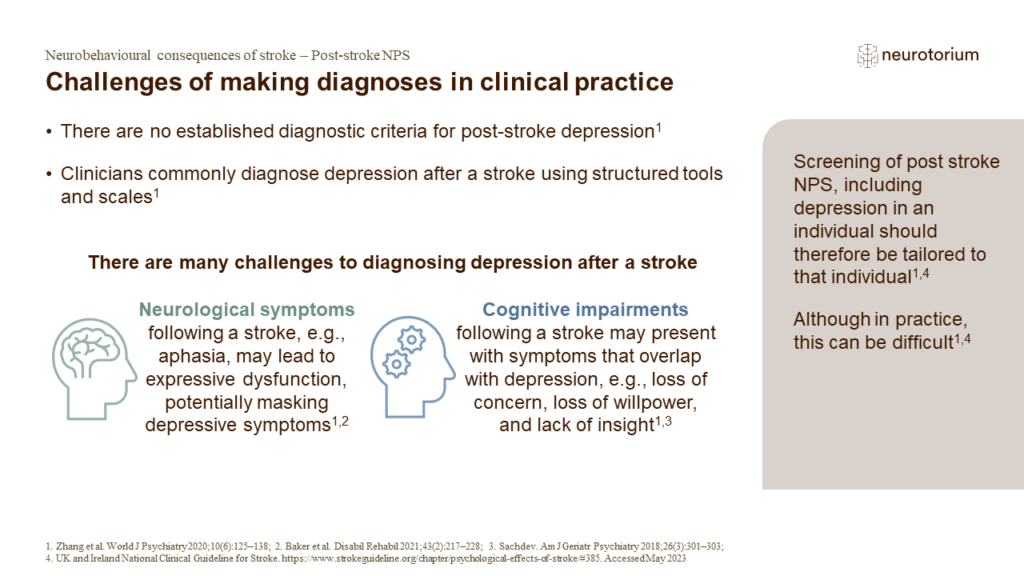
Challenges of making diagnoses in clinical practice
Making an accurate diagnosis of post-stroke neuropsychiatric symptoms, including depression can be challenging, partly because of the overlap in symptoms and partly because the symptoms of stroke can mask some neuropsychiatric symptoms.1,4 A further complication comes fro…
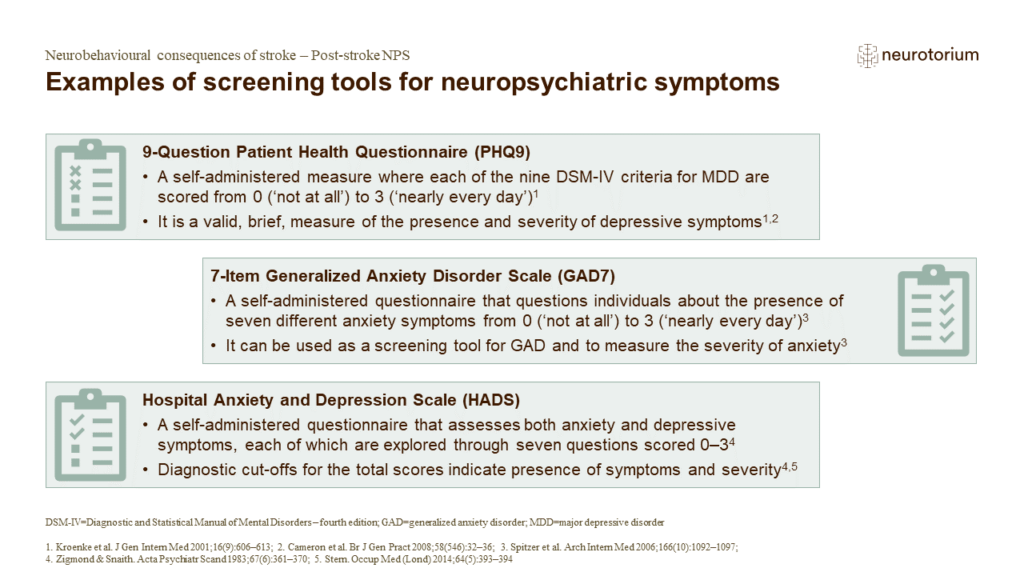
Examples of screening tools for neuropsychiatric symptoms
Whilst there are no established screening tools for many of the neuropsychiatric symptoms that can occur after a stroke, there are screening tools which are clinically useful, some of which are introduced on the slide.6 Adapted screening tools for people with varying degr…
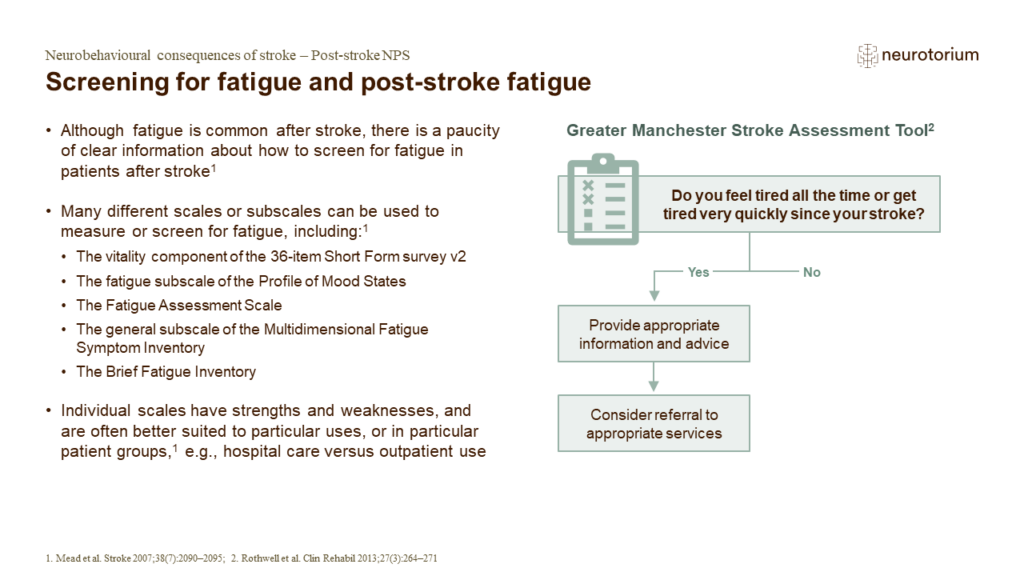
Screening for fatigue and post-stroke fatigue
There are many scales that can be used to assess fatigue or that include a subscale about fatigue.1 One such scale is the Greater Manchester Stroke Assessment Tool, which has been studied as a tool for assessing patients six months after a stroke, and has been found to be…
Epidemiology of post-stroke NPS
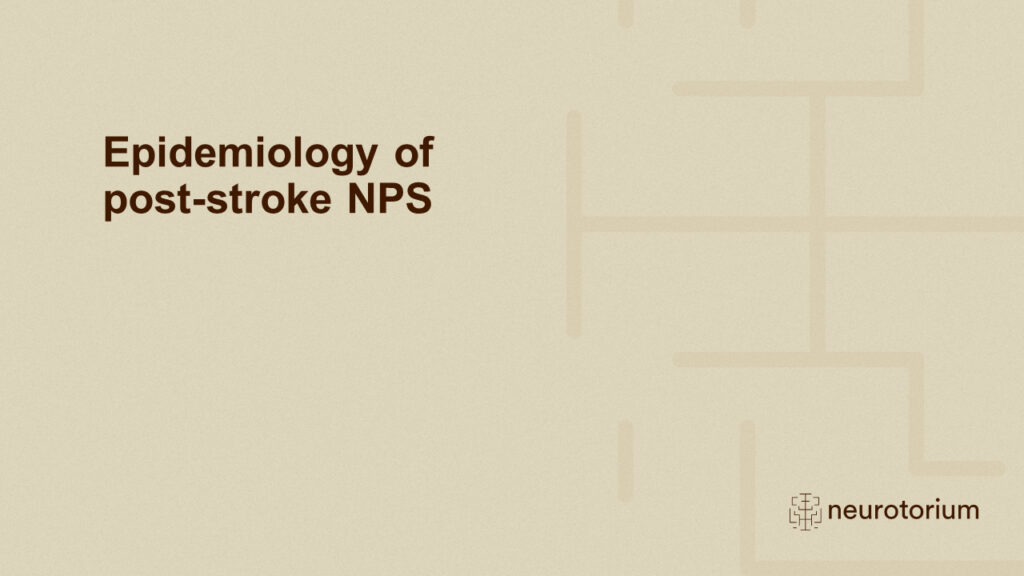
Epidemiology of post-stroke NPS
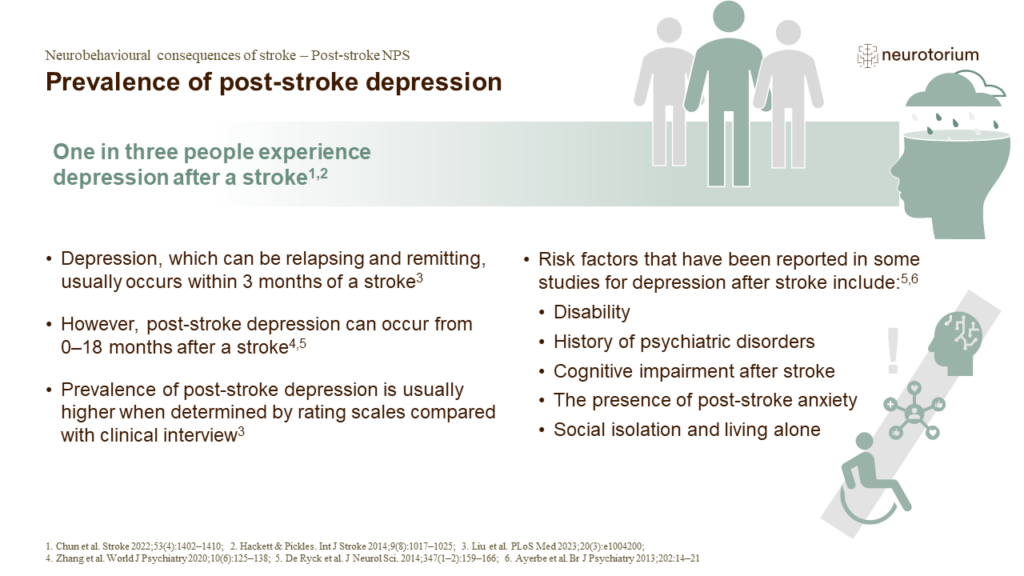
Prevalence of post-stroke depression
As outlined on the slide, depression is a common symptom after a stroke. Compared with roughly 3.4% of the general population,7 approximately 30% of people experience depression after a stroke.1,2
References:
1.Chun HY, Ford A, Kutlubaev MA, Almeida OP, Mead GE. Depressio…
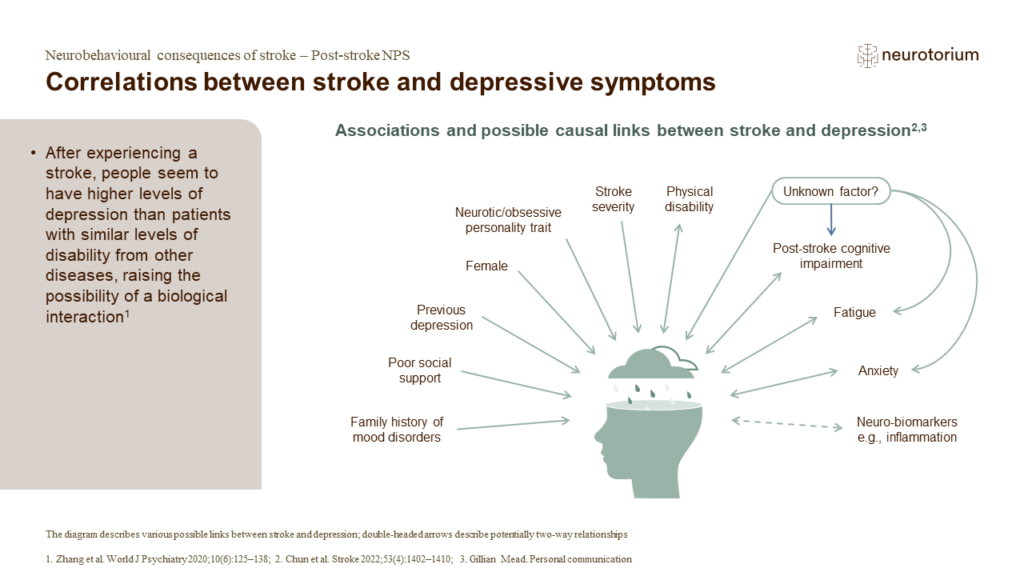
Correlations between stroke and depressive symptoms
As shown on the slide, there are many potential points of interaction between the disease processes of stroke and depression.1,2 Whilst a systematic review published in 2000 found no support for an association between the risk of depression and the site of brain lesion ca…
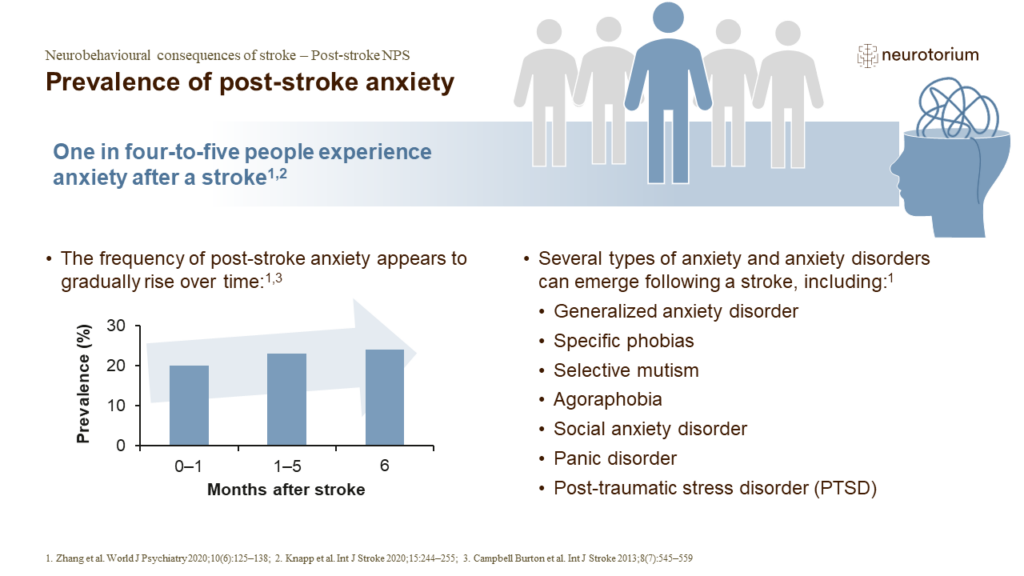
Prevalence of post-stroke anxiety
As outlined on the slide, anxiety is common after a stroke, experienced by roughly 20–25% of people post-stroke,1,3 compared with approximately 3.8% of the general population.4 The anxiety disorders which can accompany stroke share the core clinical anxiety symptoms of un…
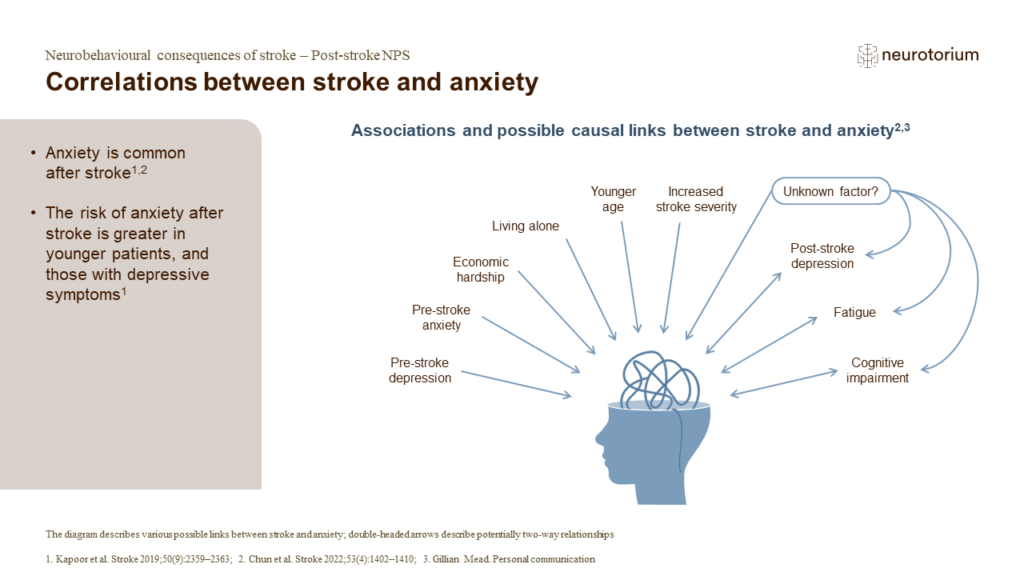
Correlations between stroke and anxiety
As shown on the slide, there are many potential points of interaction between the disease processes of stroke and anxiety.1,2
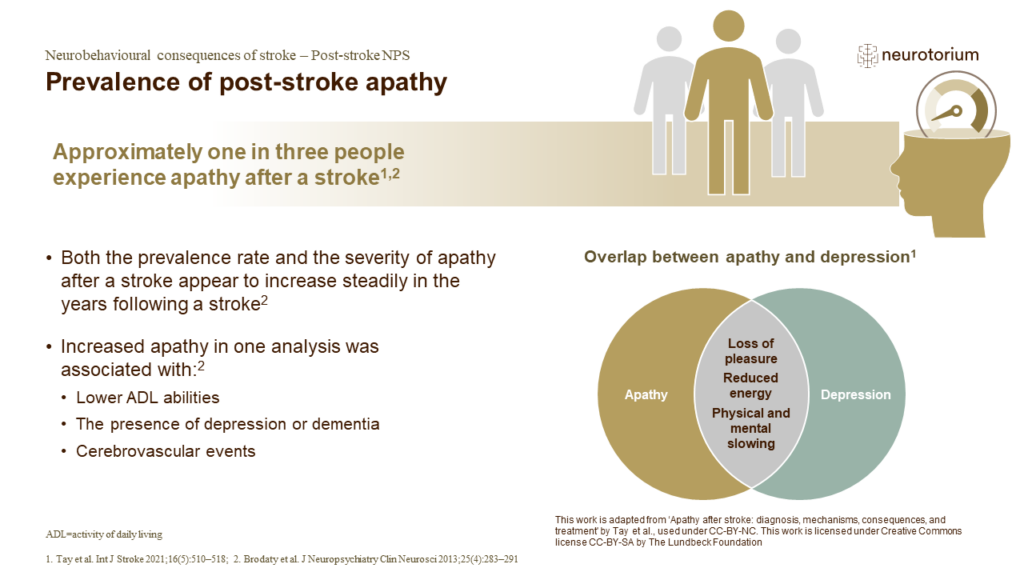
Prevalence of post-stroke apathy
Apathy – a reduction in goal-directed behaviour – is a common occurrence after stroke.1,2 Because of overlapping clinical presentation, apathy can be misdiagnosed as depression.1 However, despite its prevalence, apathy after stroke is poorly understood.1
References:
1.Tay…
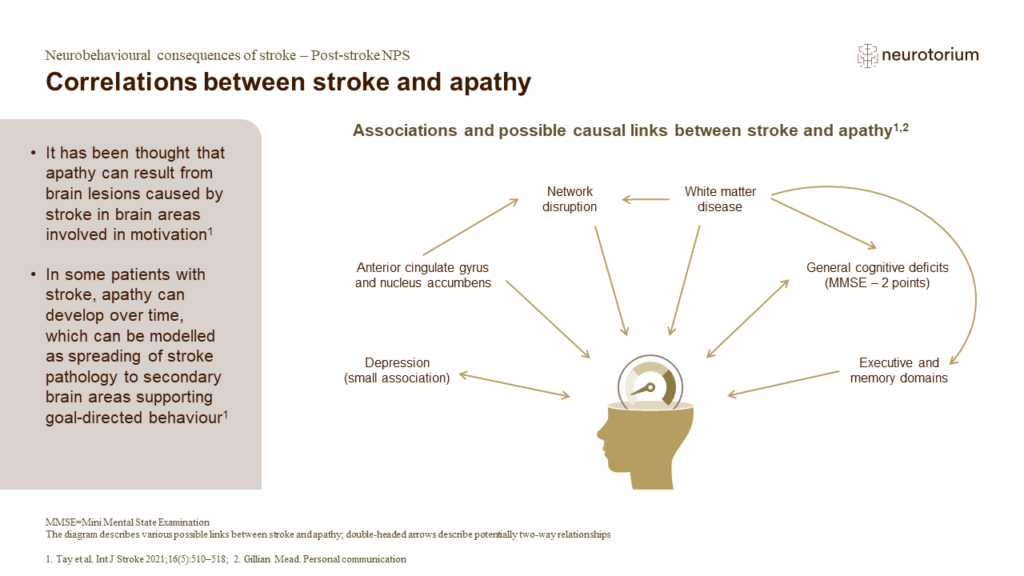
Correlations between stroke and apathy
Apathy is thought to arise from the neurobiological changes of a stroke, as outlined on the slide.1 However, it is not as simple as stroke directly causing damage to areas of the brain involved in goal-directed behaviours.1 Rather, there is thought to be a spread of strok…
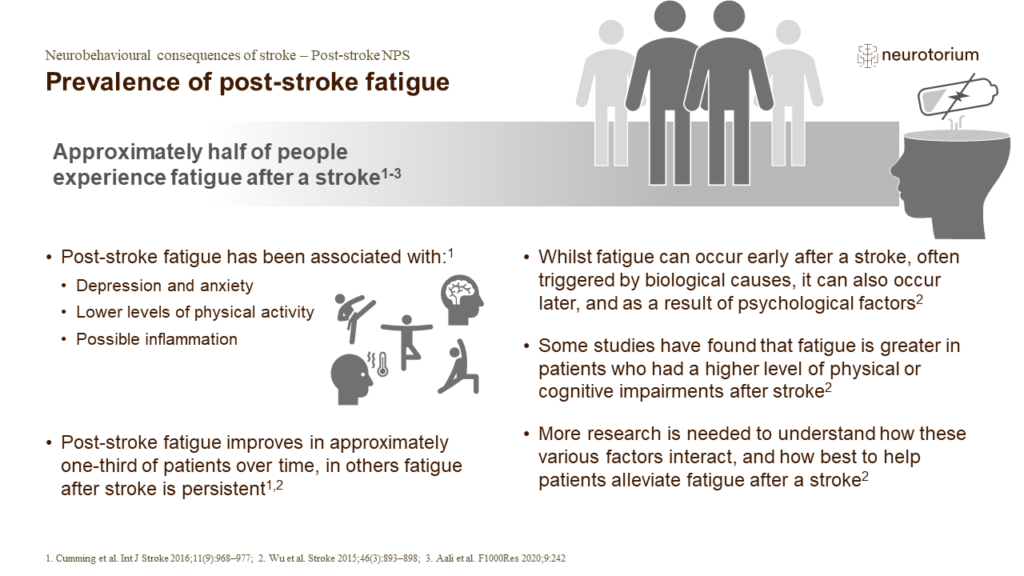
Prevalence of post-stroke fatigue
As a symptom, fatigue can be found throughout the general population, but it does appear to be common in patients with chronic diseases, including stroke as outlined on the slide.1-3
References:
1.Cumming TB, Packer M, Kramer SF, English C. The prevalence of fatigue after…
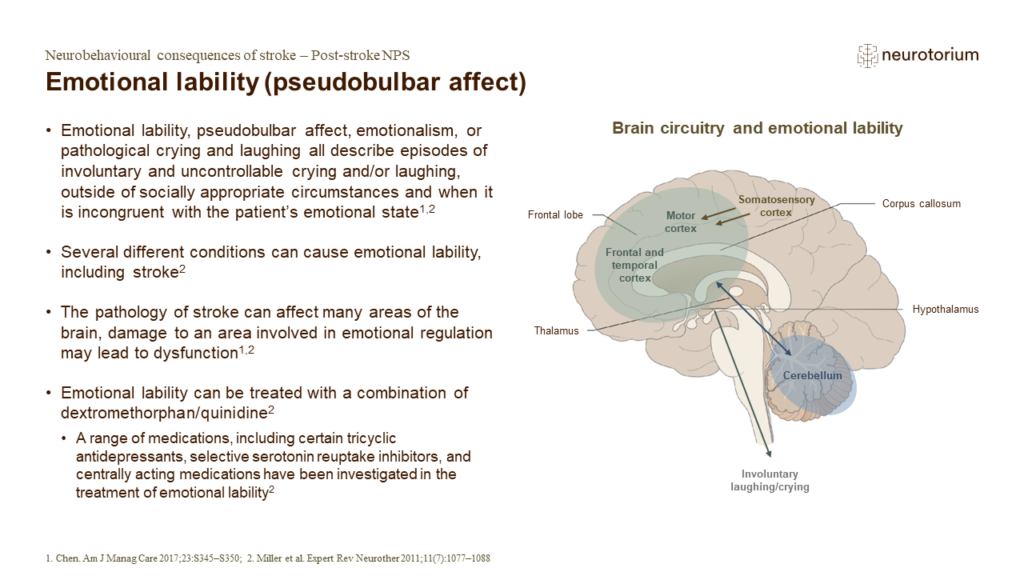
Emotional lability (pseudobulbar affect)
Emotional lability is thought to result from damage to certain descending pathways in the brain, as detailed on the slide.1 Such damage can occur in several diseases, including Parkinson’s disease, amyotrophic lateral sclerosis, and as a result of stroke.1
References:
1.C…
